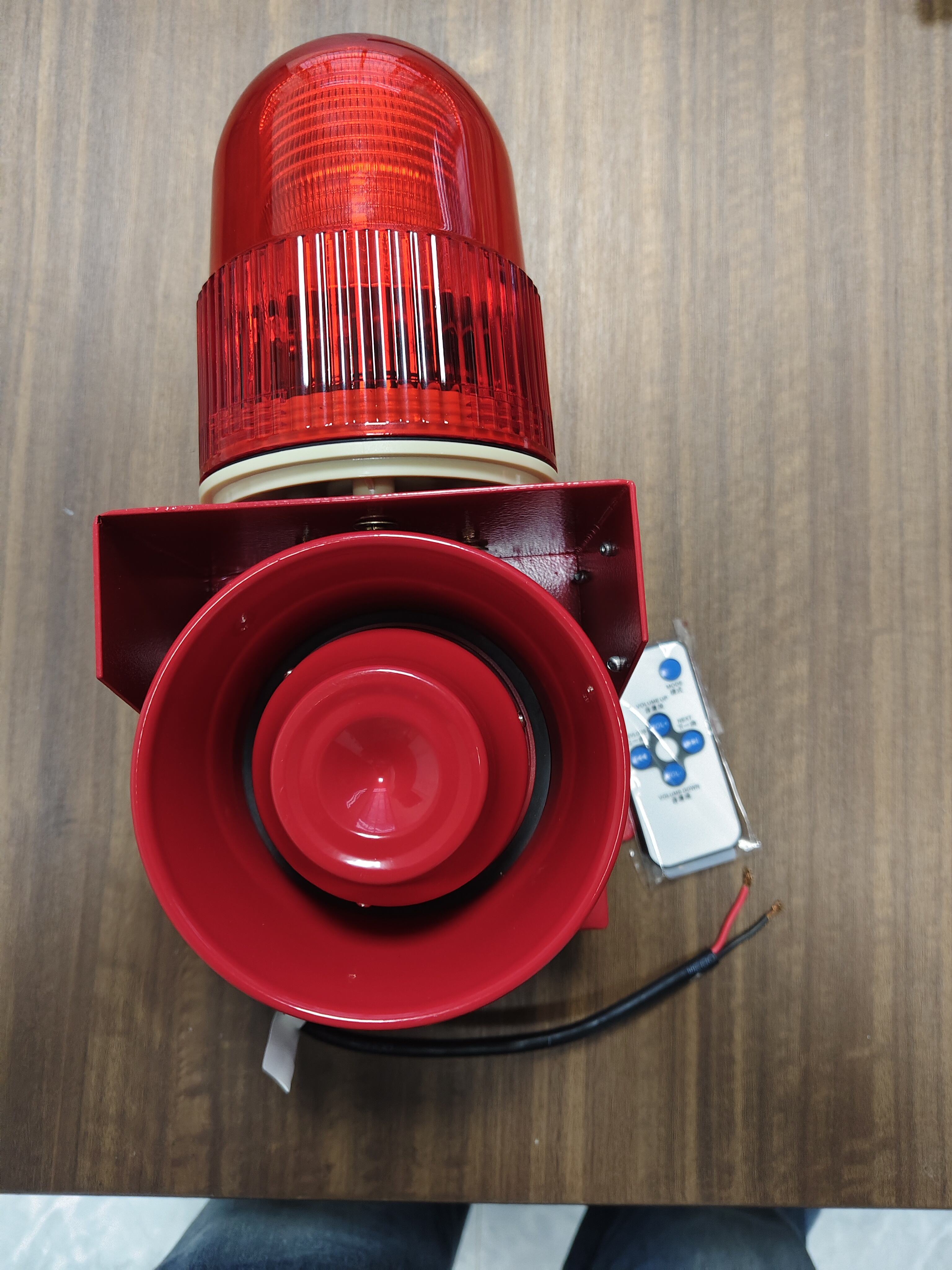Workplace safety is a top priority for businesses across all industries, from factories and construction sites to offices and hospitals. Effective emergency communication is critical to ensuring employees know how to respond to threats like fires, chemical leaks, or security breaches. Traditional alarm systems—such as sirens, buzzers, or flashing lights—can alert people to danger but often fail to provide clear guidance on what to do next. This is where a voice alarm system makes a significant difference. A voice alarm uses spoken messages to deliver specific, actionable information during emergencies, directly improving safety awareness and response efficiency. This guide explores how voice alarm systems enhance workplace safety, from reducing confusion to ensuring faster, more coordinated actions.
What Is a Voice Alarm System?
A voice alarm system is an emergency communication tool that uses pre-recorded or live voice messages to alert employees to hazards and guide their actions. Unlike traditional alarms that rely on sounds or lights alone, a voice alarm delivers clear, verbal instructions, such as “Evacuate immediately via the west staircase” or “Chemical leak in zone 2—put on protective gear and move to the assembly area.” These systems are typically integrated with sensors (fire detectors, gas monitors) and security systems, allowing them to trigger automatically when a threat is detected. They can also be activated manually by safety personnel during unforeseen emergencies.
Voice alarm systems are designed to be heard and understood even in noisy environments, with features like adjustable volume, repeat messages, and multiple speakers strategically placed throughout the workplace. This ensures that critical information reaches every employee, regardless of their location.
How Voice Alarm Systems Improve Safety Awareness
Delivers Clear, Specific Instructions
One of the biggest limitations of traditional alarms is their ambiguity. A siren or flashing light tells employees “there is danger” but not what the danger is, where it is, or how to respond. This ambiguity can lead to confusion, panic, or incorrect actions—all of which put lives at risk.
A voice alarm solves this by providing detailed, specific information. For example:
- During a fire: “Fire detected in the warehouse—evacuate to the south parking lot using exit doors 3 and 4. Do not use elevators.”
- During a security threat: “Unauthorized access in the main office—lock doors, stay away from windows, and await further instructions.”
- During a chemical leak: “Toxic gas detected in lab B—put on respirators, shut down ventilation, and move to the east corridor.”
This clarity ensures employees understand the nature of the threat, its location, and the exact steps to take, reducing guesswork and improving safety awareness. When people know what to do, they are more likely to act quickly and correctly.
Reduces Panic and Improves Decision-Making
Emergencies often trigger panic, especially when people are unsure of the situation. Panic can lead to irrational behavior, such as rushing toward danger, ignoring safety protocols, or blocking exits. A voice alarm helps calm nerves by providing a sense of control through clear guidance.
The human voice is inherently reassuring in stressful situations, especially when delivering calm, authoritative instructions. Hearing a familiar voice (such as a safety officer’s pre-recorded message) or a clear, steady tone helps employees stay focused and follow procedures. For example, in a busy factory, a voice alarm stating, “This is a fire drill—please walk calmly to the assembly area” prevents the chaos that might occur with a sudden, unexplained siren.
By reducing panic, voice alarm systems ensure that employees make rational decisions based on safety protocols, significantly lowering the risk of injuries or fatalities.
Ensures Consistent Communication Across Large or Complex Workplaces
Many workplaces are large, spread out, or have multiple zones (e.g., factories with different production areas, hospitals with wings and floors, or campuses with multiple buildings). Traditional alarms may not reach all areas evenly, leaving some employees unaware of the emergency.
Voice alarm systems are designed to cover every part of the workplace with strategically placed speakers. In large facilities, they can even deliver zone-specific messages—alerting only the areas affected by the threat while avoiding unnecessary disruption in safe zones. For example, if a fire breaks out in one wing of a hospital, the voice alarm can target that wing with evacuation instructions while informing other areas to “stand by for updates,” preventing widespread panic.
This targeted, consistent communication ensures that no employee is left in the dark, improving overall safety awareness across the entire workplace.
Overcomes Language and Literacy Barriers
Workplaces with diverse teams may include employees who speak different languages or have limited literacy skills. Traditional alarms, which rely on written signs or universal sounds, can fail to communicate effectively with these employees, leaving them unaware of how to respond.
Voice alarm systems address this by supporting multiple languages and simple, clear wording. Pre-recorded messages can be stored in several languages (e.g., English, Spanish, Mandarin) and triggered based on the workplace’s needs. For example, in a multicultural factory, a voice alarm might first broadcast instructions in English, then repeat them in Spanish and Hindi. This ensures that all employees, regardless of their primary language, understand the emergency and the required actions.
By using spoken language—something everyone can understand, regardless of reading ability—voice alarm systems ensure that safety information is accessible to every member of the team.

Integrates with Sensors for Instant, Accurate Alerts
Modern voice alarm systems are integrated with workplace sensors and security tools, such as fire detectors, smoke alarms, gas monitors, and motion sensors. This integration allows the system to trigger automatically as soon as a threat is detected, delivering instant alerts without waiting for manual activation.
For example, if a smoke detector in a warehouse triggers, the voice alarm system immediately broadcasts a fire alert with evacuation instructions—often within seconds of the threat being identified. This speed is critical in emergencies where every second counts, such as chemical leaks or fast-spreading fires.
Additionally, these systems can relay data from sensors to provide more accurate information. A voice alarm might state, “Smoke detected in section C, temperature rising rapidly—evacuate immediately,” giving employees a clearer picture of the threat’s severity. This accuracy improves safety awareness by ensuring employees understand the urgency of the situation.
Supports Training and Drills
Safety awareness isn’t just about responding to emergencies—it’s also about preparing for them through regular training and drills. Voice alarm systems play a key role in these activities, helping employees practice their response to realistic scenarios.
During drills, the system can broadcast simulated emergency messages, such as “Fire drill in progress—evacuate using your assigned route.” This allows employees to experience how the alarm will sound and practice following the instructions, making them more prepared for real emergencies. Over time, repeated exposure to the voice alarm’s tone and message structure helps employees recognize and respond to alerts more quickly.
Some voice alarm systems even include features for post-drill feedback, such as tracking evacuation times or identifying areas where employees struggled to hear instructions. This data helps businesses improve their safety protocols and training programs, further enhancing overall safety awareness.
Complies with Safety Regulations
Workplace safety is governed by strict regulations in most countries, such as OSHA in the U.S., HSE in the UK, or ISO standards globally. Many of these regulations require emergency systems to provide clear, actionable information to employees—not just alert them to danger.
Voice alarm systems help businesses comply with these regulations by meeting the requirement for effective communication. For example, OSHA’s fire safety standards mandate that alarm systems “provide adequate warning to enable occupants to escape” and that instructions for evacuation be clear. A voice alarm directly fulfills this by delivering specific evacuation guidance.
By using a voice alarm system, businesses avoid penalties for non-compliance while ensuring their safety measures meet the highest standards—ultimately improving safety awareness by demonstrating a commitment to employee well-being.
Adapts to Dynamic or High-Risk Environments
Certain workplaces face unique safety challenges, such as high noise levels (factories, construction sites), moving machinery, or frequent shifts in employee locations (warehouses with mobile teams). Traditional alarms may be drowned out by noise or fail to reach employees on the move.
Voice alarm systems are designed to adapt to these environments. In noisy settings, they use high-volume speakers and tone adjustments to cut through background noise, ensuring messages are heard over machinery or equipment. In large warehouses, they can use paging systems or portable radios to reach employees working in remote areas.
For example, in a construction site with loud tools, a voice alarm might use a loud, clear tone followed by repeated instructions: “Evacuate the site immediately—structural issue detected. Move to the north gate. Repeat: move to the north gate.” This ensures even employees wearing ear protection can hear and understand the alert.
Real-World Examples of Voice Alarm Impact
Factory Fire Evacuation
A manufacturing plant with 500 employees experienced a fire in its paint storage area. The voice alarm system, triggered by smoke detectors, immediately broadcast: “Fire in paint storage—evacuate to the east parking lot. Avoid the west wing. Do not use elevators.” Employees followed the instructions, and the entire workforce was safely evacuated in under 10 minutes. The clear guidance prevented employees from rushing toward the fire or using blocked exits, avoiding injuries.
Hospital Chemical Spill
In a busy hospital, a small chemical spill in a lab triggered gas sensors. The voice alarm targeted the lab and adjacent areas: “Chemical spill in lab 3—staff in labs 2-4, put on PPE and isolate the area. Patients on floor 2, stay in rooms. Cleaning team, respond to lab 3.” The targeted message prevented panic among patients and ensured staff took the correct safety measures, containing the spill quickly.
Office Security Threat
An office building faced an unauthorized access attempt after hours. The security team activated the voice alarm manually: “Security breach in the lobby—employees on floors 1-3, lock your offices and stay away from windows. Security is responding.” Employees knew exactly how to protect themselves, and the threat was resolved without incident.
FAQ
How is a voice alarm different from a traditional siren or bell?
A traditional siren or bell alerts people to danger but provides no details about the threat or how to respond. A voice alarm delivers specific, spoken instructions (e.g., “Evacuate via exit 5”) that guide employees’ actions, reducing confusion and improving safety.
Can voice alarm systems work in noisy workplaces?
Yes. Voice alarm systems are designed with high-volume speakers, tone adjustments, and noise-canceling features to ensure messages are heard even in loud environments like factories or construction sites. Some systems also repeat messages to reinforce key instructions.
Do voice alarm systems support multiple languages?
Many do. Modern voice alarm systems can store pre-recorded messages in multiple languages, allowing them to broadcast instructions in the primary languages of the workforce. This ensures all employees understand the emergency guidance.
How are voice alarm messages created?
Messages are typically pre-recorded by safety personnel or professional voice actors to ensure clarity and authority. They can include standard instructions for common emergencies (fires, spills) and be updated as needed. Live voice messages can also be broadcast during unexpected situations.
Are voice alarm systems expensive to install and maintain?
While initial installation costs may be higher than traditional alarms, voice alarm systems are cost-effective in the long run. They reduce the risk of accidents, lower liability, and often qualify for insurance discounts. Maintenance involves regular testing of speakers and updating messages, which is straightforward with modern systems.
Table of Contents
- What Is a Voice Alarm System?
-
How Voice Alarm Systems Improve Safety Awareness
- Delivers Clear, Specific Instructions
- Reduces Panic and Improves Decision-Making
- Ensures Consistent Communication Across Large or Complex Workplaces
- Overcomes Language and Literacy Barriers
- Integrates with Sensors for Instant, Accurate Alerts
- Supports Training and Drills
- Complies with Safety Regulations
- Adapts to Dynamic or High-Risk Environments
- Real-World Examples of Voice Alarm Impact
- FAQ

